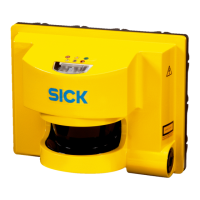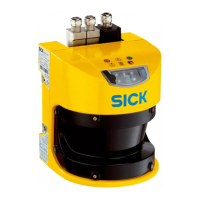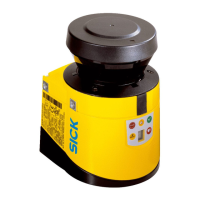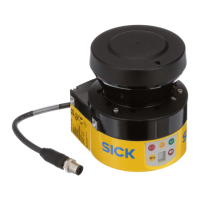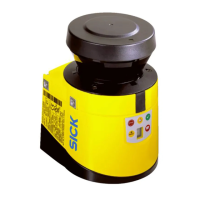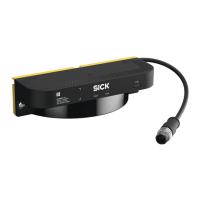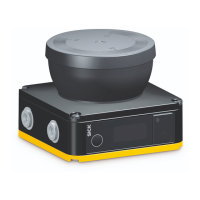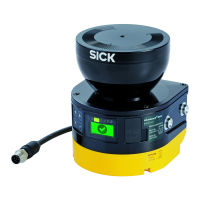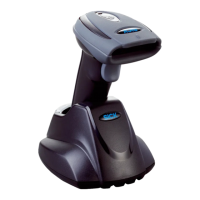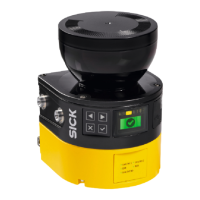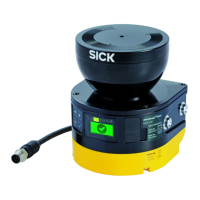Depending on the basic response time selected for the S3000, you can increase the
in
put delay in 30 ms increments (for 60 ms basic response time) or 60 ms increments
(for 120 ms basic response time).
The following empirical values exist for the switchover time using various methods:
Table 13: Empirical values for the required input delay
Switching method Input delay required
Electronic switching using controller or comple‐
ment
ary electronic outputs with 0 to 10 ms
bounce time
10 ms
Contact (relay) controls 30–150 ms
Control via independent sensors 130–480 ms
Further topics
•
"T
iming for monitoring case switching", page 35
7.7.2 Sampling for the static control inputs
Overview
If y
ou are using static sampling, you can choose between complementary sampling or
1-of-n sampling depending on the control features available. Depending on this selec‐
tion, you can define the switching criteria for the monitoring cases.
Complementary evaluation
One control input comprises two connections. For correct switching, one connection
must be inverted in relation to the other.
The following table shows the levels that must be present at the connections for the
control input to define the logical input state 1 and 0 at the related control input.
Table 14: Level at the connections for the control inputs for complementary sampling
A1 A2 Logical input state
1 0 0
0 1 1
1 1 Error
0 0 Error
1-of-n sampling
W
ith 1-of-n sampling, you use the single connections of the control input pairs.
Table 15: Truth table for 1-of-n sampling with two input pairs
A1 A2 B1 B2 Result (e.g., monitoring case no.)
1 0 0 0 1
0 1 0 0 2
0 0 1 0 3
0 0 0 1 4
0 0 0 0 Error
1 1 0 0 Error
NOTE
•
All c
onnections must be connected.
•
Only one connection is ever allowed to be 1.
CONFIGURATION 7
8012029/ZA20/2019-11-14 | SICK O P E R A T I N G I N S T R U C T I O N S | S3000 Cold Store
73
Subject to change without notice
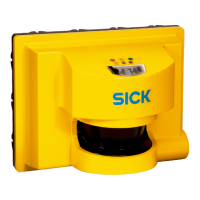
